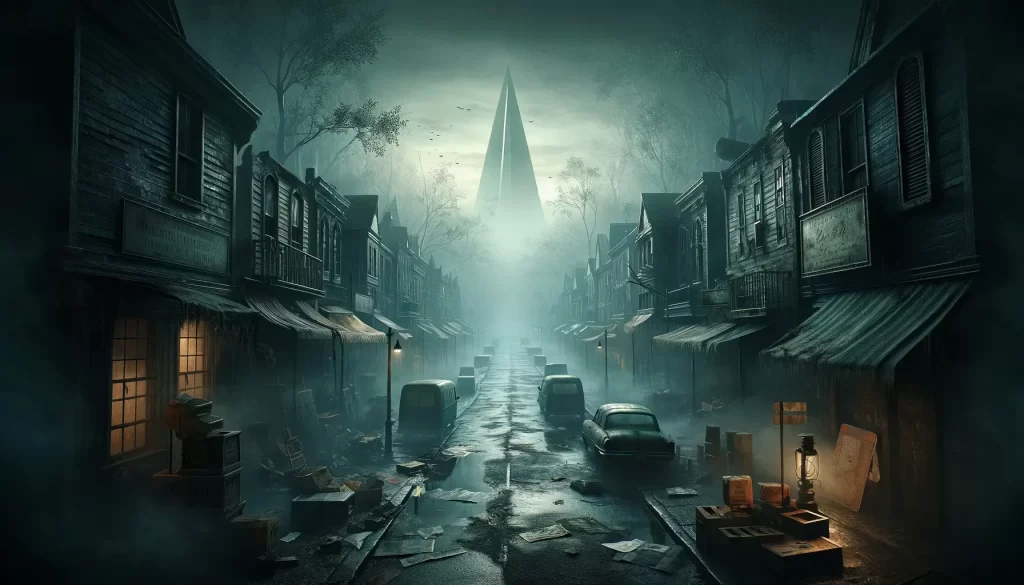The Origins of Silent Hill and Its Cultural Impact
The Silent Hill franchise, created by the video game developer Konami, made its debut in 1999, quickly establishing itself as a unique contender in the survival horror genre. The game was the brainchild of key figures such as Keiichiro Toyama, who crafted its haunting atmosphere and chilling narrative. Its initial release on the PlayStation was marked by a profound exploration of psychological horror, effectively distinguishing it from its contemporaries, focusing not merely on jump scares but on deep-seated fears and anxieties.
One of the most striking aspects of Silent Hill is its atmospheric design, heavily influenced by urban decay and the visualization of characters’ inner turmoil. The fog-drenched streets and the eerie ambiance of the titular town serve not only as a backdrop for terrifying encounters but also as a reflection of the psychological states of its characters. This focus on the psychological over the physical has resonated deeply with audiences, cementing the franchise’s place in horror culture.
As the series evolved, Silent Hill expanded its horizons beyond the realm of video games, inspiring a variety of adaptations in film and literature. The narratives, often marked by their complex characters and emotional depth, have led to the production of film adaptations that seek to capture the original’s essence while reaching a broader audience. The cultural impact of Silent Hill is profound; it has permeated various forms of media and has even influenced the crafting of newer horror narratives. From its thematic exploration of guilt and fear to its memorable characters, Silent Hill has established itself as an archetype for psychological horror, providing a blueprint for future horror creators.
In conclusion, the Silent Hill series has transcended its origins as a video game to become a cultural phenomenon, reinforcing the importance of psychological elements in horror storytelling and defining new standards in the genre.
Gameplay Mechanics: What Sets Silent Hill Apart
The gameplay mechanics of Silent Hill are pivotal in distinguishing it from other entries in the survival horror genre, contributing significantly to its esteem among fans. One of the most notable features is its intricate puzzle-solving elements. Players are often tasked with deciphering obscure clues and manipulating the environment to progress. This emphasis on environmental interaction not only heightens cognitive engagement but also serves to reinforce the narrative’s haunting themes, making the gameplay experience feel immersive and rewarding.
Combat systems in Silent Hill are deliberately designed to reflect the emotional turmoil of the characters. Unlike standard action games, the focus is less on direct combat and more on strategic evasion and resource management. This design choice creates a sense of vulnerability that complements the psychological horror elements, requiring players to make prudent decisions about when to confront enemies or flee. The inventory management system further underscores this aspect, where players must juggle limited resources, making timely choices critical to survival.
The atmospheric sound design and graphics are integral to crafting the signature eeriness associated with the Silent Hill series. The haunting soundscapes, which include ambient noises and unsettling music, combine with grainy visuals to establish a sense of foreboding that permeates the gameplay. Each installment offers unique aesthetic choices while retaining the core eerie ambiance, enhancing the player’s emotional response and sense of unease.
Furthermore, psychological horror elements are expertly woven into the gameplay, affecting both the narrative and player experience. Characters often confront their inner demons, manifesting fears and traumas that resonate on a deeply personal level. This intertwining of gameplay mechanics and narrative not only immerses players in the Silent Hill universe but also elevates the entire experience, setting it apart from other games in the genre.
Key Characters and Their Arcs in the Silent Hill Series
The Silent Hill series is renowned for its intricate storytelling, largely driven by its complex characters whose journeys profoundly explore themes of guilt, trauma, and redemption. Central to this narrative tapestry are protagonists such as Harry Mason and Heather Mason, whose backstories and psychological conflicts resonate with players on multiple levels. Harry, the adoptive father in “Silent Hill,” embarks on a frantic search for his missing adopted daughter, Cheryl. His journey through the fog-laden town reveals not only external horrors but also his internal struggles with guilt and loss, emphasizing the emotional stakes involved in his quest. This character arc speaks volumes about the lengths a parent will go to save their child, while simultaneously unpacking the traumas that shape their reality.
Another prominent figure, Heather Mason, the protagonist of “Silent Hill 3,” continues this exploration of personal trauma. A survivor of her father Harry’s experiences, Heather must confront her own identity and the dark forces that seek to control her. The evolution of Heather’s character from an innocent girl into a determined survivor reflects a maturation process, highlighting the impact of her upbringing in the shadow of Silent Hill’s horrors. Her narrative is intertwined with themes of self-discovery and the weight of parental expectations, enhancing the emotional depth present in the community’s struggles.
The series does not shy away from showcasing antagonists who embody the darker aspects of the characters’ psyches. Iconic figures such as Pyramid Head and Claudia Wolf serve as manifestations of guilt and punishment, actively engaging with the protagonists’ traumas. Their presence elucidates how characters navigate their fears, ultimately contributing to a richer understanding of the Silent Hill universe. Each character, whether hero or foe, plays a pivotal role in the overarching narrative and thematic exploration found within this immersive world, making the ‘guia Silent Hill Geekzilla‘ a vital resource for unraveling these intricate connections.
Community and Fandom: The Role of Guia Silent Hill Geekzilla
The Silent Hill series has cultivated a dedicated fanbase that thrives in vibrant online communities, with platforms like Guia Silent Hill Geekzilla playing a pivotal role in fostering engagement and discussion. These forums and social media groups provide a space where fans can share their interpretations and theories regarding the complex narratives and themes that characterize Silent Hill. The community’s collective knowledge aids in demystifying the game’s intricate storyline, offering insights that enhance the gaming experience for new players.
One of the most notable aspects of the Silent Hill fandom is its creative output. Artists and writers are consistently inspired by the haunting aesthetics and deep emotional narratives of the series. Such fandom contributions can be found on Guia Silent Hill Geekzilla, where fans post original artwork, fan fiction, and even music inspired by the games. These artistic expressions not only showcase individual talent but also further enrich the lore of Silent Hill, allowing fans to explore characters and settings in new and innovative ways.
Furthermore, discussions within the community help to maintain the enduring legacy of the Silent Hill brand. Collaborations between fans often lead to detailed analyses, creating a space for critical thought about themes such as psychological horror and the human condition, central to the series. The shared insights found in community discussions can serve as essential tools for players navigating the often-puzzling world of Silent Hill. Online guides, such as those on Guia Silent Hill Geekzilla, offer step-by-step strategies, ensuring players are not lost amidst the often cryptic gameplay while enriching the overall community dialogue.
Ultimately, the fan community surrounding Silent Hill is a dynamic tapestry woven with creative expression, thoughtful analysis, and mutual support, all of which sustain the series’ relevance in contemporary gaming culture.


